
CE: Common Era 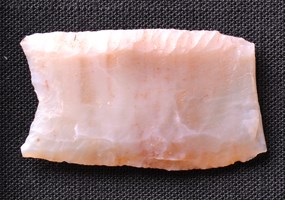
NPS Paleoindian Paleoindian groups are known for their large, well-made projectile points used for hunting game. At Petrified Forest, the people used petrified wood to create a range of different types of stone tools. Early Paleoindian groups, with their distinctive elegant fluting of projectile points, help define the Clovis and Folsom Cultures of these ancient people. Folsom, Clovis, and later Paleoindian camps have been found within Petrified Forest National Park. 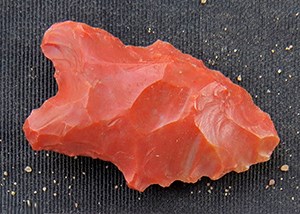
NPS Archaic 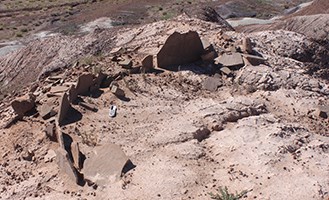
NPS Basketmaker Sivu'ovi is the largest known Basketmaker II village in the park, consisting of at least 47 pit houses and numerous storage pits. It is currently thought that Sivu'ovi was occupied seasonally, when the surrounding lands could be farmed. Artifacts found there include Adamana Brown-style pottery, some of the earliest ceramics in northern Arizona. 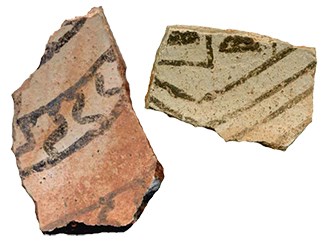
NPS Pueblo I The use of ceramics for cooking and storage was very important. Today, these are the most common artifacts found at Pueblo sites. Ceramics changed from plain brown and gray vessels to corrugated varieties for cooking and storage, and more decorative types with intricate black-on-white designs. 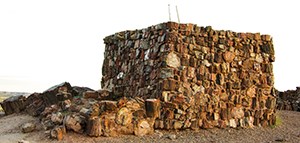
NPS/VIP Stuart Holmes Pueblo II-III Ceramics during this period show increased diversity of designs, going from corrugated and black-on-white pottery to black-on-red and polychrome pottery as well. At Petrified Forest, the use of petrified wood as a building material became popular, creating the "agate houses" throughout the park. 
NPS Museum Collection Pueblo IV Puerco Pueblo, founded during the Late Pueblo III period, is a fine example of a large village of its time. Consisting of over 100 rooms located on the banks of the Puerco River, it probably had a population of around 200 people. The inhabitants farmed along the flood plain and traded with their neighbors up and down the river. Puerco Pueblo and the Petrified Forest area were largely depopulated in the early 1400s due to a long standing drought that affected the agricultural-based settlements. The park was never fully abandoned, but there was a large movement of people to nearby larger population centers (Zuni and Hopi, for example). The end of this period in the Southwest coincides with the arrival of Spanish explorer Francisco Vazquez de Coronado. His was the first European expedition to see the Grand Canyon and Colorado River.
Tags: Indigenous, heritage, American Indian, Native American, culture, history, archeology, Ancestral Pueblo, Puebloan, Hopi, Zuni, Navajo, Paleoindians, Archaic
|
Last updated: November 11, 2018
